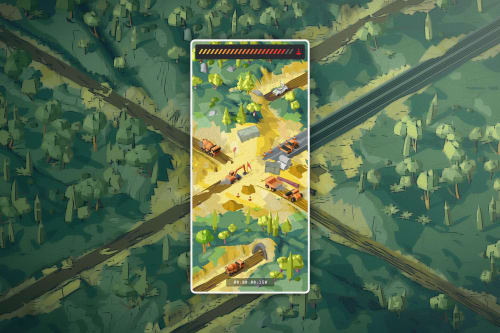
Strapi headless CMS quick review
Context
I have been busy these last weeks designing and building an e-commerce fashion website.
I only handled this kind of project once for an outdoor assets shop, back in 2011 using Prestashop.
A lot of time has passed, and my preferred stack has completely changed since then.
I decided it was a good opportunity to experiment on using a jamstack approach as the shop is quite small and won't be updated that often. The website is still in development but I'll post the url here when it's done.
Stack
Front-end
I use Next.js as I decided to settle with React, and this one has versatile deployment options, is popular, and has a very active development.
Back-end
Strapi comes in the game. This one was on my radar since a long time. I experimented a very bugged version 2 years ago but the project has become stable enough these days.
UI
I still use TailwindCSS, it has been working perfectly for all my past projects. The recently shipped Just in time mode make it a lot easier to work with!
Front-end hosting
This time I try Vercel instead of Netlify as I plan to use next/image for efficient remote images optimizations. I struggled a lot with next/image in the past. My conclusion is it's a breeze to handle optimized image with it, but only if deployed using Vercel, that is designed to work with.
Back-end hosting
I use Heroku as it's the easiest platform to push a Node.js application from my experience. We need this hosting to host Strapi, as it's an open-source self-hosted CMS.
Payment solution
Snipcart comes in the game, as I want to offload all the e-commerce development work at most, but still want an elegant integration with my front-end.
Image optimization
I use once again Cloudinary for 2 main reasons:
- Have a read-made image optimization feature for all uploaded images coming from Strapi
- Leverage advanced images transformations to get colored version within the product template.
Why choosing Strapi?
This project will be managed by a non-technical user, so we need a GUI.
I don't know how it will scale in the future and I don't want to be stuck with priced plans. Strapi is free as it's an open-source and self-hosted solution. Its popularity is growing and I would easily find answers if I find myself stuck somewhere.
What I liked
-
Free solution
-
Interface is pretty clear, as it might be a bit older, but the upcoming v4 version will bring a whole new UI. The v3 one is still pleasant to my mind.
-
All the develpment work is handled locally using a node server with a local database, so we don't need to query an hosted API all the time. We also have a great control over the logic under the hood as all files are within a node project.
-
Documentation is great
-
Community is big
-
It's French, so prowd of supporting a local promising startup 👍
What I struggled with
-
It's still buggy despite everything. Some saving mechanics acts weirdly in many ways and we have to find hacks to handle some changes.
-
We have to handle all the production deployment pipeline (database sync, Heroku deployment). Having a git monorepo for both frontend and backend is strongly advised, and additional hosting configurations needed by the way...
-
No preview feature out of the box, we have to glue things in both front and back code to make it work.
-
No conditional fields out of the box, we need to put additionnal piece of logic within backend controllers, which is not very convenient.
My experience with other headless CMS
I tried other solutions in the past, some of them with great satisfaction:
-
Prismic: proprietary hosted solution with a nice GUI and handy I18n feature. API easy to work with. Building document models is a bit confusing to me. I used it for the Marketpay micro-site.
-
Storyblok: proprietary hosted solution with a very nice GUI. The key feature is the visual editor that. It also has its own image optimization service. I prefered it over Prismic. I used it for the Marcellino online restaurant menu.
-
Netlify CMS: GIT based solution, only tryed in a development context as it was not needed afterward. Really easy to deploy, but very limited in features.
-
Forestry: GIT based solution, also only tried in a development context. It's like Netlify CMS with a better UI. I think I will go toward this one if I ever need a GIT based CMS.
-
Headless Wordpress: it's Wordpress but I only used it's API. Querying the API is quite easy. But we still have to handle Wordpress theme development and I don't want to invest time using PHP anymore as want to focus on JS language.
Next
So far, I enjoyed using Strapi despite annoying bugs and lacking features, but at the end, it's the same story whatever the tool we using. The upcoming v4 release will hopefully fix most of these drawbacks. I feel it's the most promising headless solution that fits my needs and I'm eager to stick with it and invest time to have a good grasp.





